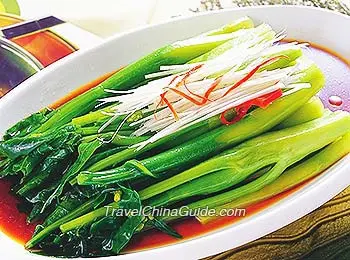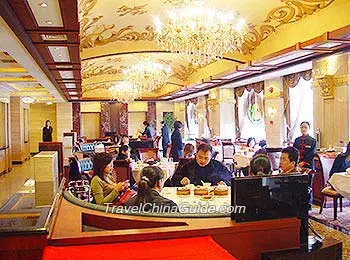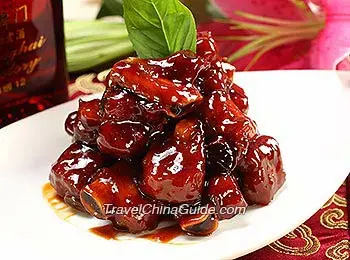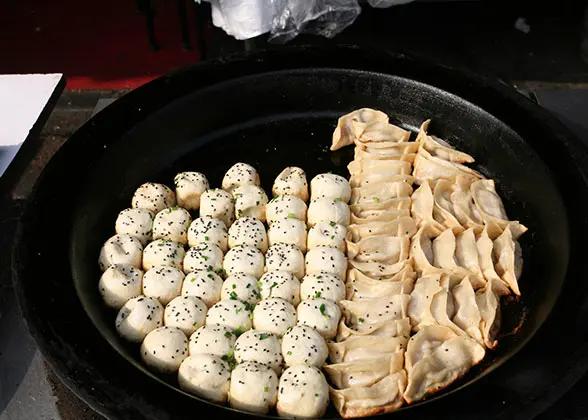Fu He Hui: The Most Expensive Vegetarian Restaurant in Shanghai
Address: No. 1037, Yuyuan Road
Chinese: 福和慧
Opening Hours: 11:30 - 14:00; 17:30 - 22:30
How expensive is Fu He Hui Restaurant?
Unlike the majority of restaurants in Shanghai, Fu He Hui only offers set meals at three levels: simple set meal, classic set meal, and seasonal set meal. The contents of classic set meal are partially changed every season, while those of seasonal set meal are totally changed when the season changes. In addition, you can order tea or other drinks to match your meal. The price for the set meals are as below:
Simple set meal: CNY 580
Classic set meal: CNY 780
Seasonal set meal: CNY 880
Tea Pairing: CNY 280
Note: If two guests enjoy a meal together, they are required to order the same set meal.
Why is Fu He Hui Restaurant worth a try?
1. The food is creatively amazing.
Fu He Hui’s vegetarian cuisine is not a routine of traditional vegetarian dishes, but emphasizes on the characteristics of the ingredients themselves and tries to bring the original taste of the ingredients to the extreme. Each dish adopts the best raw material, very rich in flavor, and fully considers the setting and the match with drink. Besides, they are impressively endowed with cultural connotation and stunning value, thus can be called exquisite works of art.
2. It has a brilliant fame.
Fu He Hui Restaurant is the only vegetarian restaurant among the first batch of Michelin-starred restaurants in Shanghai. Meanwhile, it has been shortlisted as the top 50 restaurants in Asia over continuous years. For vegetarians in Shanghai, Fu He Hui is undoubtedly a name at the top of the pyramid of vegetarian culinary arts.
3. The dining environment is very comfortable.
Though not eye-catching from the outside, Fu He Hui is classy inside. The whole decoration is inspired by the traditional Zen Buddhism concepts of China. Upon entry, you will smell the fragrance given out by burning incenses made of eaglewood. The Chinese elements are scattered in each detail of the setup, like the vases, plants, chairs, tables, and lamps. There are altogether three floors, mainly equipped with quiet private rooms. Therefore, it’s an excellent place for enjoying food.
4. The service is quite considerate.
During your mealtime, a helpful waiter will serve you at the table. He or she will introduce the raw materials, ingredients, cooking method, and the source of inspiration of each dish to the guests. What’s more, the waiter can speak English if necessary. The menus are also very customer-friendly. They have English versions and you can directly know the ingredients of each dish from the menu.
What are the best specialties?
Baked Porcini
The porcini is first baked with salt and then sealed in a transparent glass jar. Afterward, the porcini is smoked by burning grape vines. When the waiter opens the jar, you can smell the mixed fragrance of fruitwood and porcini. Dipping the porcini in the white sesame cream sauce mixed with cumin powder and taking a bite of it, your taste buds will be greatly satisfied.
Assortment
This dish is special because of its appearance. You can see sweet and sour spare ribs made of vegetables, gourd-shaped dry bean curd, and a pocket stuffed with wild herbs. The chef cleverly pierces a section of lotus root into a plum and stew it for hours after proper processing so that it is quite similar to the real sweet and sour spare ribs whether in appearance or taste. The pocket is actually a bean curd sheet stuffed with seasonal wild herbs and tied with a stem of coriander.
White Gourd
White gourd is actually a common and cheap food material in China, however, Fu He Hui Restaurant has successfully made it an unusual dish. The white gourd is sculpted into little balls which are stuffed with mashed taro. Then it is stewed together with vileplume and almonds for more than three hours. The long-time cooking integrates the scents of the food materials to the best.
The dish is creatively served together with the lotus flower tea, another highlight in Fu He Hui. The lotus flower is transported from Taiwan and is the only edible kind among all lotus flowers. When the waiter pours the fresh ginger and date tea onto the lotus, the light yellow petals will slowly spread out. Under the dim lights, it looks very beautiful.
Lotus Fungus
The precious rare fungi is soaked in light vegetarian soup, with the company of fresh and sweet baby corns, cordyceps flowers, and black wolfberries.
Taro
The taro is first steamed, mashed and made into taro balls. Then coat the taro balls with salted egg yolk and quinoa. Next, fry the taro balls until they look like drying lychees. The fried taro balls, decorated by asparagus lettuce shreds on the top and mushroom soup and sweet potato leaves at the bottom, looks very delicate. As you bite, a mixture of flavors will spread on your tongue.
Tomato
A tomato is first peeled and hollowed, then stuffed with golden fungi, white beech mushrooms, macadamias and nuts and stewed. A spinach section is used as the topping. Under the tomato, there is a small amount of fresh papaya juice. The dish tastes fresh and sweet.
Bean Curd
At the bottom of the plate, there is a shallow layer of bean curd. The special point is the peach gum stew on the top, accompanied with gingko seeds. The tender bean curd and the chewy peach gum compose a sharp contrast.



